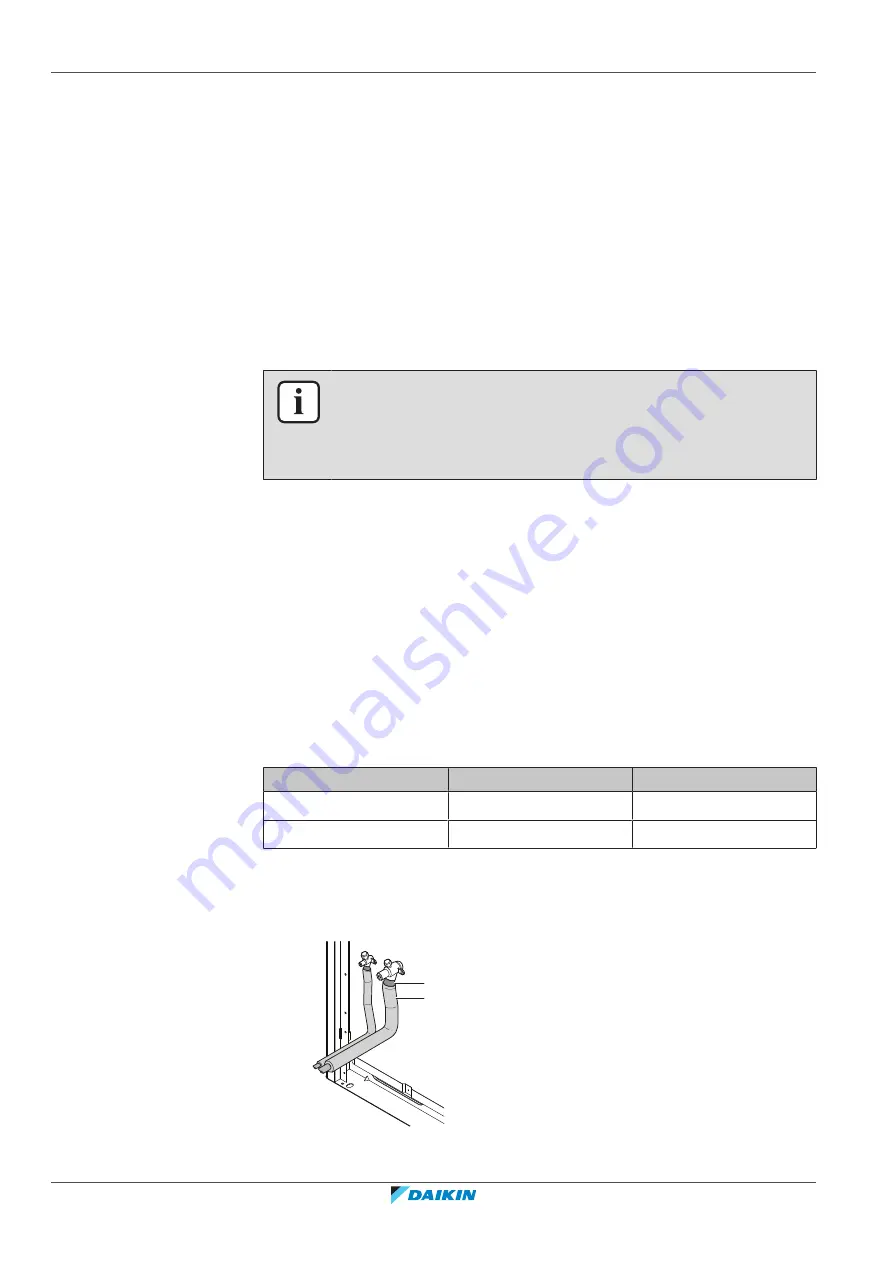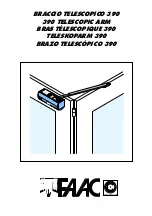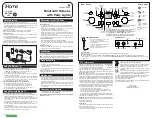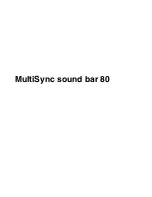
6
|
Installation
Installer and user reference guide
62
RYYQ+RYMQ+RXYQ8~20U7Y1B
VRV IV+ heat pump
4P546228-1A – 2019.10
1
Evacuate the system for at least 2 hours to a target vacuum of –100.7 kPa
(–1.007 bar)(5 Torr absolute).
2
Check that, with the vacuum pump turned off, the target vacuum is
maintained for at least 1 hour.
3
Should you fail to reach the target vacuum within 2 hours or maintain the
vacuum for 1 hour, the system may contain too much moisture. In that case,
break the vacuum by pressurising with nitrogen gas to a gauge pressure of
0.05 MPa (0.5 bar) and repeat steps 1 to 3 until all moisture has been
removed.
4
Depending on whether you want to immediately charge refrigerant through
the refrigerant charge port or first pre-charge a portion of refrigerant through
the liquid line, either open the outdoor unit stop valves, or keep them closed.
See
"6.7.2 About charging refrigerant"
INFORMATION
After opening the stop valve, it is possible that the pressure in the refrigerant piping
does NOT increase. This might be caused by e.g. the closed state of the expansion
valve in the outdoor unit circuit, but does NOT present any problem for correct
operation of the unit.
6.6 To insulate the refrigerant piping
After finishing the leak test and vacuum drying, the piping must be insulated. Take
into account the following points:
▪
Make sure to insulate the connection piping and refrigerant branch kits entirely.
▪
Be sure to insulate the liquid and gas piping (for all units).
▪
Use heat resistant polyethylene foam which can withstand a temperature of 70°C
for liquid piping and polyethylene foam which can withstand a temperature of
120°C for gas piping.
▪
Reinforce the insulation on the refrigerant piping according to the installation
environment.
Ambient temperature
Humidity
Minimum thickness
≤30°C
75% to 80% RH
15 mm
>30°C
≥80% RH
20 mm
▪
If there is a possibility that condensation on the stop valve might drip down into
the indoor unit through gaps in the insulation and piping because the outdoor
unit is located higher than the indoor unit, this must be prevented by sealing up
the connections. See below figure.
a
b
a
Insulation material
b
Caulking etc.
Summary of Contents for VRV IV+
Page 165: ......
Page 166: ......
Page 167: ......
Page 168: ...4P546228 1A 2019 10 Copyright 2018 Daikin Verantwortung für Energie und Umwelt ...
















































